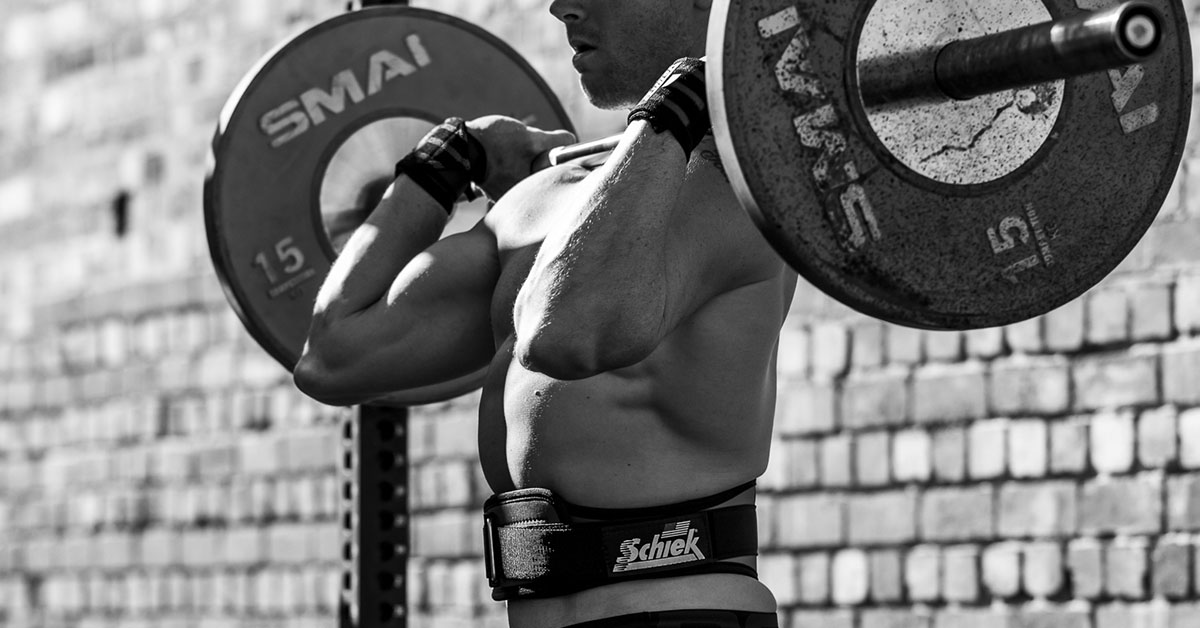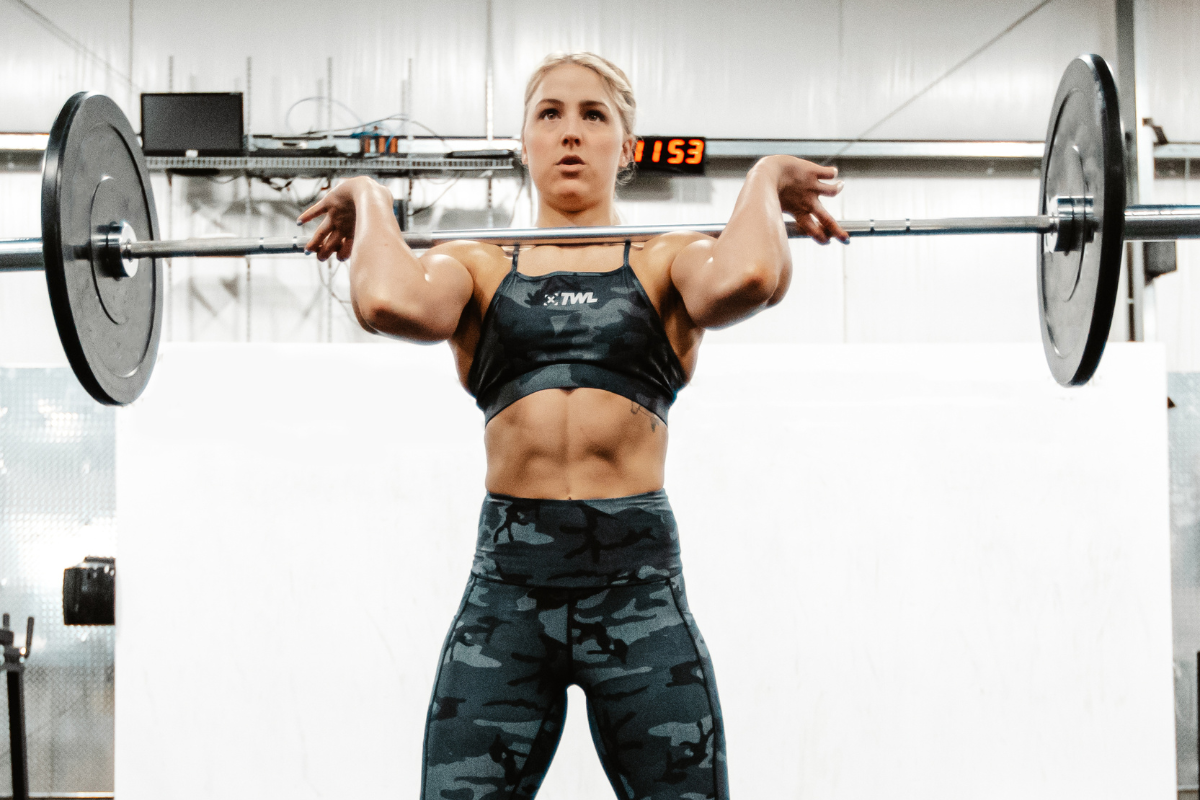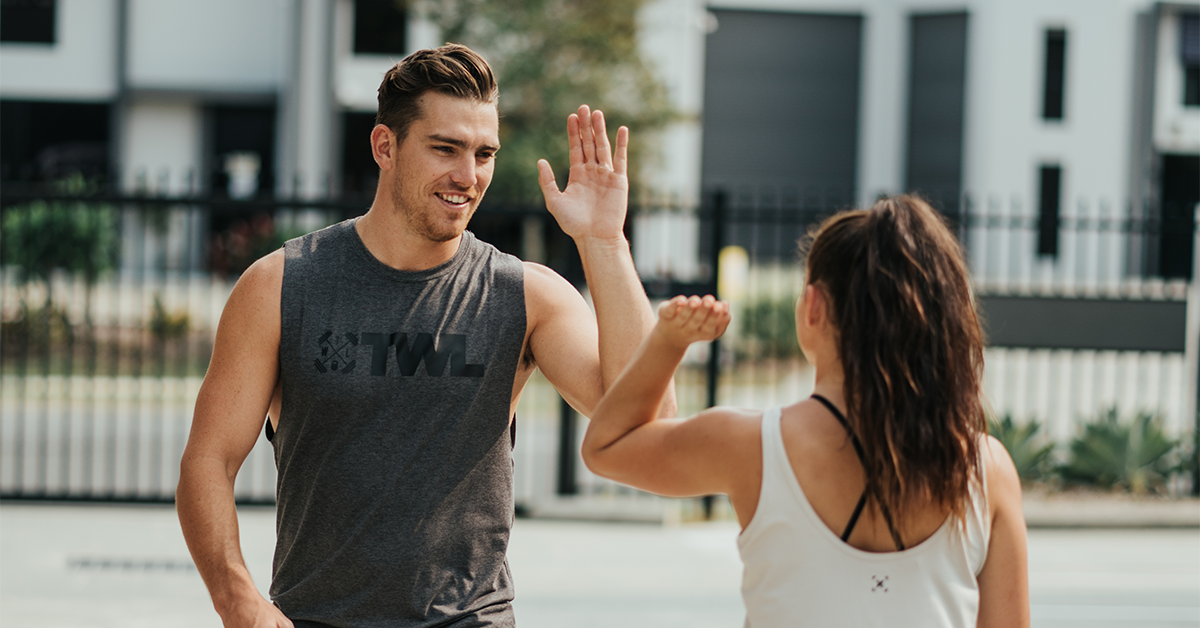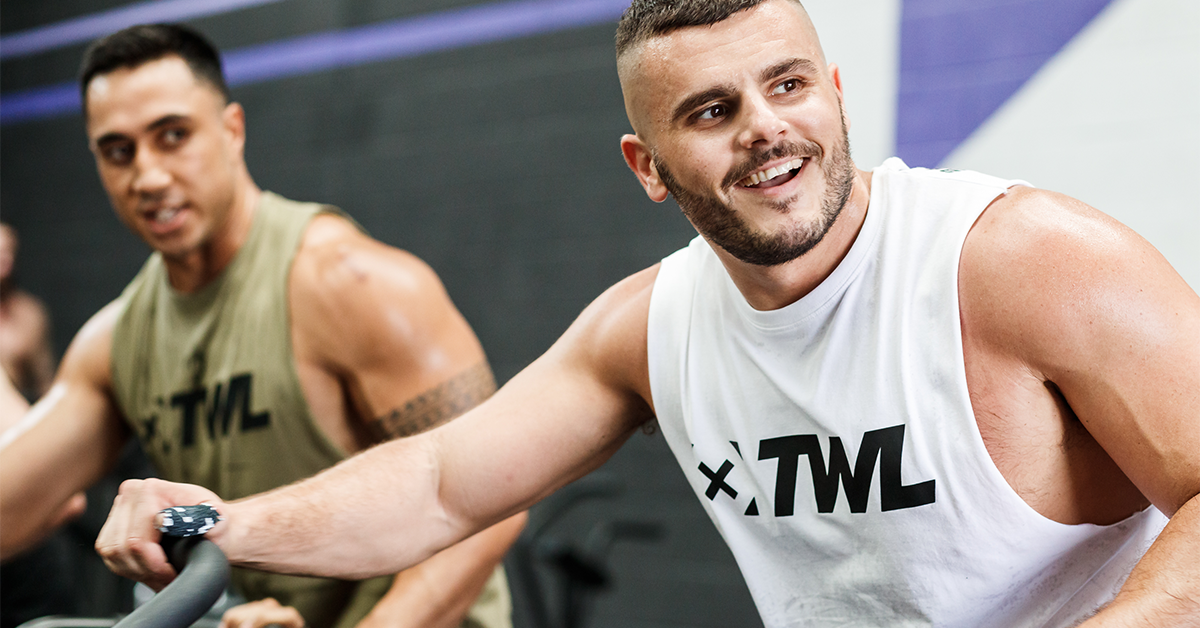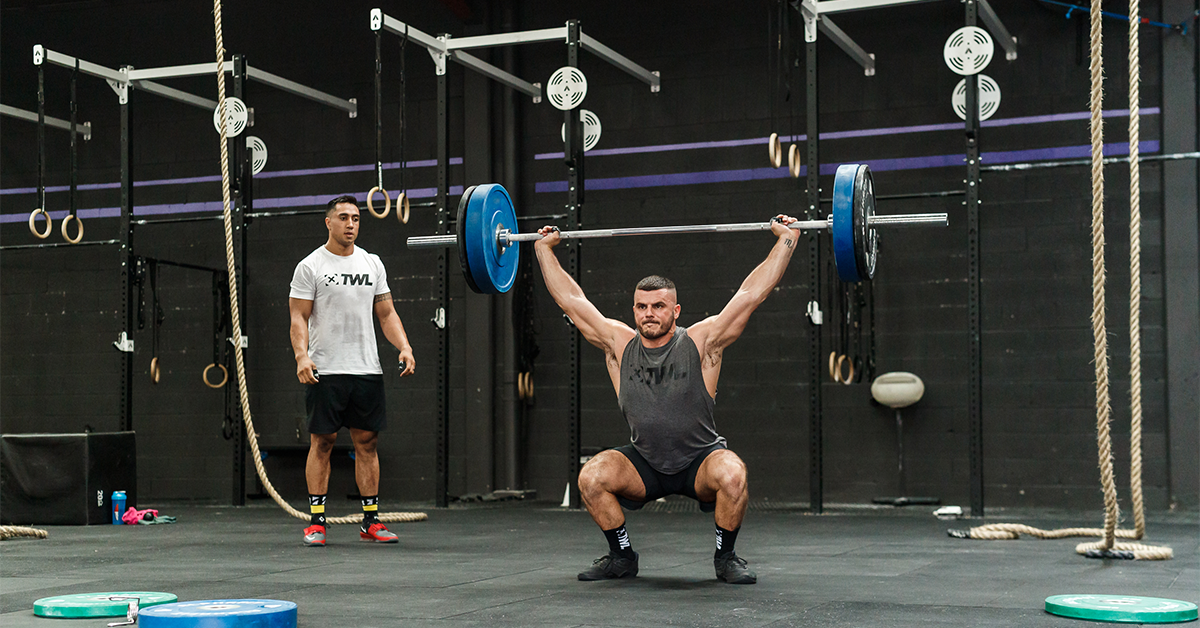For those that have been serious about strength training for some time now, you know how frustrating the strict press can be. When it comes to squats or deadlifts, PRs are typically measured in 10- or 20-pound increments. On the other hand, adding a single pound to your strict press may be an accomplishment worthy of a steak dinner and bottle of scotch. It takes a lot to bump you strict press number up. Here are five strict press variations that can hopefully make that journey a little less frustrating.
5 Strict Press Variations to Build Your Upper Body Strength
1. Dumbbell Z-Press
The dumbbell z-press is performed seated on the ground with your legs outstretched in front of you. With an upright torso and dumbbells on your shoulders, press the weight up and overhead before returning back to your shoulders.
The z-press is the ultimate posture test when going overhead. It requires a rigid trunk in order to press any substantial weight overhead without toppling backward. This requires the athlete the solely rely on their shoulders to complete the rep without leaning backward in an attempt to recruit their bigger chest muscles.
Hamstring flexibility can be issue for some athletes with this movement. If that’s the case you can always sit on a plate to create a bit of elevation and ease the strain on your hamstrings.
2. Banded Strict Press
The banded strict is performed by attaching two mini bands at each end of the barbell and anchoring them to either dumbbells or the rig in line with your midline. From here, press overhead and through the band tension before returning to your shoulders.
The beauty of the banded strict press is two-fold. First, it applies accommodating resistance to a normal strict press. This means that as the athlete presses up, the band stretches more, applying more downward force on the bar. This teaches the athlete to accelerate the barbell, particularly through their “sticking point.”
Second, it’s a great corrective tool for proper bar path. Because the bands are lined up directly over the athlete’s midline, it doesn’t allow for any deviation forward when pressing overhead. It forces the athlete to press on a straight line. Not only is the banded strict press great for developing strength, but it also serves as a great teaching movement.
3. Dumbbell Single Arm Strict Press w/ KB in the Front Rack
This movement is performed with a dumbbell in one hand and kettlebell in the other. Both objects start in the front rack position. From here, the athlete presses the dumbbell overhead while the kettlebell remains in the front rack until all reps are completed on one side – then switch hands and repeat.
Developing unilateral strength is essential in rebalancing the body and correcting any hidden weaknesses. By adding the kettlebell to the front rack in the non-pressing arm, it ensures that the athlete is creating tension through their midsection and not compensating by leaning toward one side to get the dumbbell overhead. This can be done from the standing position or from a seated position, like the z-press.
4. Behind-the-Neck Snatch Grip Push Press
The behind-the-neck (BTN) snatch grip push press begins with the barbell resting across the athlete’s back. Holding the bar with their snatch grip, the athlete dips with a vertical chest before driving the bar overhead. The focus should be on squeezing the triceps to ensure a strong lockout.
The BTN snatch grip push press is great not only for developing strength overhead but also for creating body awareness and flexibility through the shoulder girdle. Oftentimes, we see athletes with a poor lockout in the snatch. Rather than actively pressing the bar into the lockout position, they passively receive the barbell in the bottom of their squat. The BTN snatch grip push press can help develop a more active and stable receiving position.
5. Half-Kneeling Landmine Press
With a barbell attached to the landmine, the athlete takes a half kneeling stance. The end of the barbell should be in the hand opposite of the leg that is raised. From here, the athlete presses the barbell overhead on a slight angle forward.
The main benefit of the half-kneeling landmine press is because you’re not pressing directly overhead, you can still develop overhead pressing strength without putting tremendous strength on the shoulder joint. This is especially relevant for those lacking adequate mobility or dealing with previous injuries while pressing overhead.
It’s also a unilateral pressing movement that requires an active, ridged torso for completion, working the entire system.

